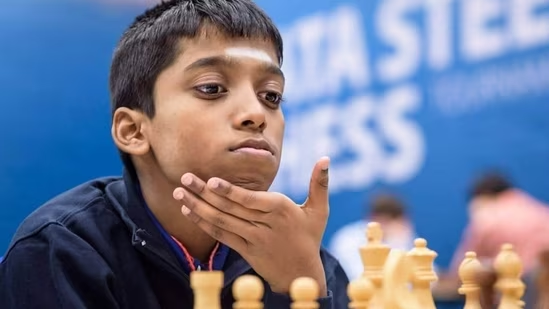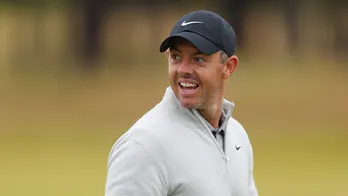India’s teen quartet ready for top board in new year
If 1988 will forever be remembered in Indian chess as the year that the country got its first Grandmaster in Viswanathan Anand, 2022 will be significant for showing that India can stage large-scale chess tournaments and compete with the best in the world. In July-August this year, India hosted the FIDE Chess Olympiad — the 44th iteration of the biennial tournament involving more than 180 countries — for the first time ever.  PREMIUM
PREMIUM
The hosting rights were awarded to India just five months before the event, an outcome of the Russia-Ukraine conflict which meant Moscow couldn’t be the host city. Moscow’s loss was Mamallapuram’s gain as the coastal town near Chennai, the epicentre of Indian chess, put up a grand show at extremely short notice.
But that wasn’t all. The teen quartet of D Gukesh, R Praggnanandhaa, Nihal Sarin and Raunak Sadhwani, along with 30-year-old B Adhiban, was part of an India B team that secured bronze in the open section of the Olympiad. It was only the second instance of an Indian team winning an Olympiad medal, the first also being a bronze in 2014 in Tromso, Norway.
That the medal came from a five-member team comprising four newbies made it all the more special. The odds were on India A, seeded second behind United States, to push for a medal, but the team of P Harikrishna, Vidit Gujrathi, Arjun Erigaisi, SL Narayanan and Krishnan Sasikiran finished fourth.
The medal-clinching display was the most resounding sign of the beginning of a new era for Indian chess dominated by these teen masters. With Anand heading into administration by becoming deputy president of the international chess federation (Fide) and the likes of Harikrishna and Gujrathi just producing steady results, it is these Gen Z kids that are grabbing the attention of the chess world.
There is no bigger evidence of that than the trio of Gukesh, Praggnanandhaa and Erigaisi beating five-time world champion Magnus Carlsen in 2022. Gukesh and Erigaisi beat him once each and Praggnanandhaa emerged victorious on three occasions. It may have come in the rapid format rather than classical time control, but as Anand said a couple of months ago, it is just as hard to beat the Norwegian great in rapid time control as it is in any other format. Incidentally, Carlsen clinched the World Rapid and Blitz titles in Almaty, Kazakhstan, last week.
“I think the significance (of the results) is for their self-confidence,” Anand had said. “They have seen that even against the best player in the world, someone against whom it is very difficult to snatch a point, they can do it. That is the positive message they should take away.”
At this stage, there is seemingly little to separate these teenagers in terms of where they stand. Gukesh has the highest Elo rating — 2725 — among the younger lot, and he was also the best player in the Olympiad. He is one of five Indians – Anand, Erigaisi, Harikrishna and Gujrathi are the others — with a live rating of more than 2700 at the moment. Both Gukesh and Erigaisi crossed the elusive mark for the first time in 2022.
“Olympiad was definitely a dream run. The performance at the Olympiad gave me the belief that I can compete at the top,” Gukesh said.
Having made considerable progress over the past 12 months, Gukesh is hoping to maintain his pace of growth. “I’m looking forward to 2023 with great excitement as I have got invitations to a few prestigious elite events where I can rub shoulders with the absolute best. I hope to utilize these opportunities and climb up the ratings,” said the 16-year-old from Chennai.
The others in this elite club will have similar goals this year. The first big event for Gukesh, Praggnanandhaa and Erigaisi this year will be the Tata Steel Chess Masters from January 13-29 in Wijk aan Zee, Netherlands.
With their games still evolving, it is likely that they will add further strings to their bow. “Though I am pleased with my classical play, I would also like to improve my speed chess skills simultaneously to keep up with my classical standard,” Gukesh said.
For Praggnanandhaa, it may be the exact opposite. As GM Srinath Narayanan recently pointed out, “Praggnanandhaa has been popular primarily because of his exploits in online rapid tournaments. I think Praggnanandhaa hasn’t played as many classical games as the other two. But it is only a matter of time before he starts doing well in classical chess too.”
Given their hunger to learn and appetite for new information, expect the teenagers to swiftly iron out their weaknesses and prove beyond doubt that they are here to stay.
Experience unrestricted digital access with HT Premium
Explore amazing offers on HT + Economist Start 14 Days Free Trial Already Subscribed? Sign In
Disclaimer: The copyright of this article belongs to the original author. Reposting this article is solely for the purpose of information dissemination and does not constitute any investment advice. If there is any infringement, please contact us immediately. We will make corrections or deletions as necessary. Thank you.







